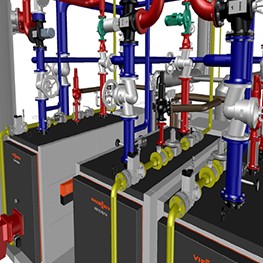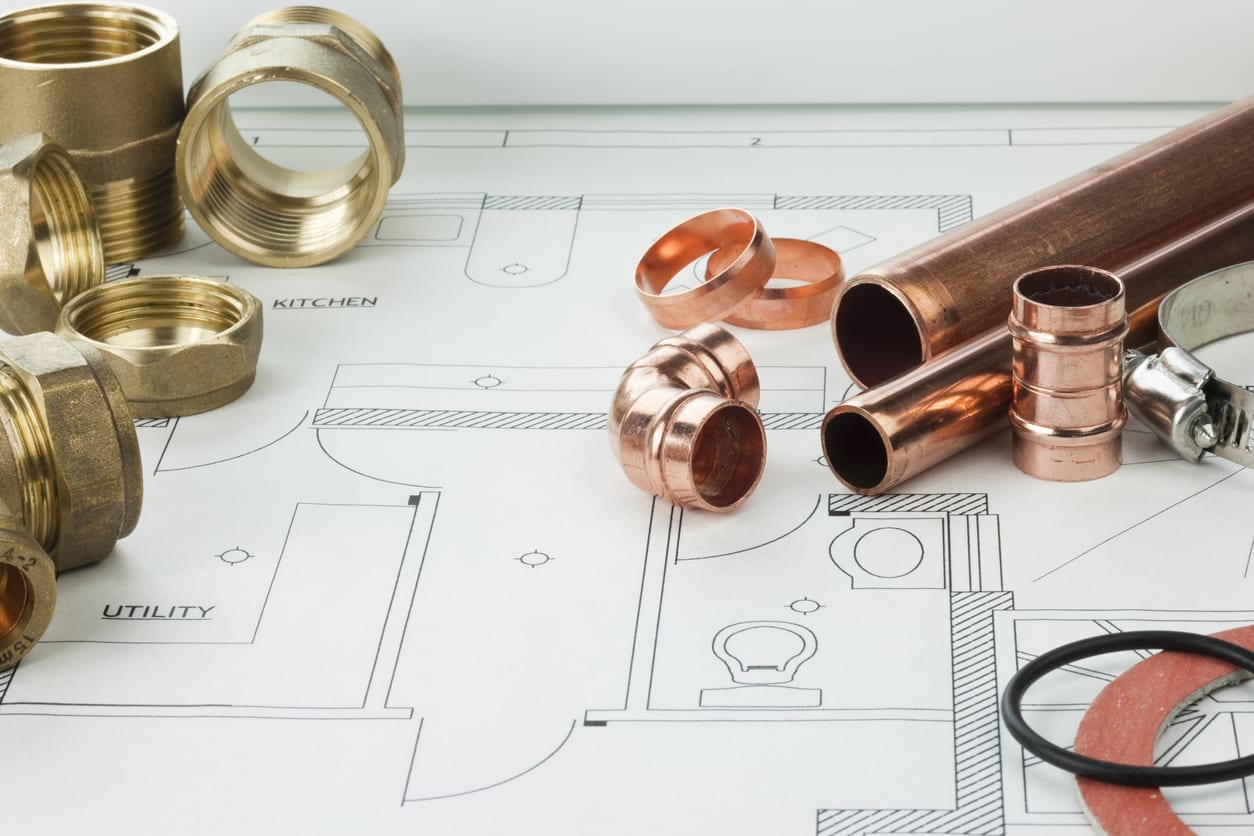The Design of Your Home's Plumbing System Explained
The Design of Your Home's Plumbing System Explained
Blog Article
Any individual has their personal perception involving Exploring Your Homes Plumbing Anatomy.

Comprehending exactly how your home's pipes system functions is essential for every single homeowner. From delivering clean water for drinking, food preparation, and showering to securely getting rid of wastewater, a well-maintained plumbing system is essential for your household's health and comfort. In this extensive guide, we'll discover the complex network that composes your home's pipes and deal pointers on upkeep, upgrades, and taking care of common issues.
Introduction
Your home's pipes system is greater than simply a network of pipelines; it's an intricate system that ensures you have access to clean water and efficient wastewater removal. Knowing its elements and how they work together can aid you stop costly repairs and make certain whatever runs smoothly.
Fundamental Components of a Pipes System
Pipes and Tubes
At the heart of your plumbing system are the pipelines and tubes that bring water throughout your home. These can be made from various materials such as copper, PVC, or PEX, each with its benefits in regards to longevity and cost-effectiveness.
Components: Sinks, Toilets, Showers, and so on.
Components like sinks, bathrooms, showers, and bathtubs are where water is used in your home. Understanding just how these fixtures link to the plumbing system helps in detecting issues and preparing upgrades.
Valves and Shut-off Factors
Valves regulate the flow of water in your pipes system. Shut-off valves are critical during emergencies or when you require to make fixings, permitting you to isolate parts of the system without interfering with water flow to the whole house.
Water System System
Main Water Line
The primary water line attaches your home to the local water or a personal well. It's where water enters your home and is distributed to different components.
Water Meter and Pressure Regulatory Authority
The water meter measures your water usage, while a stress regulator makes certain that water streams at a safe stress throughout your home's plumbing system, protecting against damage to pipelines and fixtures.
Cold Water vs. Warm water Lines
Recognizing the distinction in between cold water lines, which supply water straight from the primary, and hot water lines, which lug heated water from the hot water heater, assists in troubleshooting and preparing for upgrades.
Drainage System
Drain Pipes Pipes and Traps
Drain pipelines carry wastewater far from sinks, showers, and toilets to the sewage system or septic tank. Catches prevent sewer gases from entering your home and additionally trap particles that can trigger obstructions.
Ventilation Pipelines
Ventilation pipes enable air right into the drainage system, stopping suction that could slow down water drainage and cause traps to vacant. Correct ventilation is necessary for maintaining the stability of your pipes system.
Importance of Proper Drainage
Making sure correct drainage stops back-ups and water damages. Consistently cleansing drains pipes and maintaining traps can stop pricey repairs and prolong the life of your pipes system.
Water Furnace
Types of Hot Water Heater
Water heaters can be tankless or conventional tank-style. Tankless heating systems heat water as needed, while storage tanks save warmed water for immediate use.
Updating Your Plumbing System
Reasons for Updating
Updating to water-efficient components or replacing old pipelines can boost water top quality, reduce water bills, and enhance the worth of your home.
Modern Plumbing Technologies and Their Benefits
Check out modern technologies like clever leakage detectors, water-saving commodes, and energy-efficient water heaters that can save money and decrease environmental effect.
Expense Considerations and ROI
Compute the ahead of time expenses versus long-lasting financial savings when taking into consideration pipes upgrades. Numerous upgrades pay for themselves via minimized utility bills and less fixings.
Exactly How Water Heaters Link to the Plumbing System
Recognizing just how water heaters connect to both the cold water supply and warm water circulation lines assists in identifying issues like not enough hot water or leaks.
Upkeep Tips for Water Heaters
On a regular basis flushing your water heater to eliminate debris, examining the temperature level settings, and examining for leaks can extend its life expectancy and improve energy efficiency.
Usual Pipes Problems
Leaks and Their Causes
Leakages can occur as a result of aging pipelines, loosened fittings, or high water stress. Dealing with leakages without delay stops water damage and mold and mildew growth.
Obstructions and Blockages
Obstructions in drains and commodes are usually triggered by flushing non-flushable products or a buildup of grease and hair. Making use of drain displays and bearing in mind what decreases your drains pipes can avoid obstructions.
Signs of Pipes Problems to Look For
Low water pressure, slow-moving drains pipes, foul odors, or unusually high water costs are indications of potential plumbing troubles that must be dealt with promptly.
Pipes Maintenance Tips
Normal Assessments and Checks
Schedule yearly plumbing examinations to capture issues early. Try to find indicators of leakages, rust, or mineral accumulation in taps and showerheads.
DIY Maintenance Tasks
Straightforward jobs like cleaning faucet aerators, checking for toilet leaks utilizing color tablets, or protecting revealed pipelines in cold climates can prevent major pipes concerns.
When to Call an Expert Plumbing Professional
Know when a plumbing problem needs specialist proficiency. Attempting complicated repair services without appropriate expertise can lead to even more damage and higher repair service prices.
Tips for Reducing Water Usage
Simple behaviors like fixing leakages promptly, taking shorter showers, and running full loads of washing and recipes can conserve water and reduced your energy bills.
Eco-Friendly Pipes Options
Consider sustainable pipes products like bamboo for flooring, which is durable and environment-friendly, or recycled glass for kitchen counters.
Emergency situation Preparedness
Steps to Take Throughout a Pipes Emergency situation
Know where your shut-off shutoffs lie and how to shut off the water in case of a ruptured pipeline or major leak.
Significance of Having Emergency Situation Calls Handy
Keep contact info for regional plumbing professionals or emergency services conveniently offered for fast feedback throughout a pipes situation.
Ecological Impact and Conservation
Water-Saving Fixtures and Appliances
Installing low-flow faucets, showerheads, and bathrooms can substantially minimize water usage without compromising performance.
DIY Emergency Situation Fixes (When Suitable).
Momentary repairs like using air duct tape to spot a dripping pipeline or positioning a pail under a trickling tap can decrease damages until a specialist plumbing technician gets here.
Verdict.
Comprehending the anatomy of your home's pipes system equips you to maintain it properly, conserving time and money on fixings. By complying with regular upkeep routines and staying notified concerning modern pipes innovations, you can ensure your pipes system runs effectively for many years to come.
The Anatomy of Your Home s Plumbing System
Understanding the anatomy of your home s plumbing system is essential for any homeowner. It not only helps in identifying potential issues but also facilitates effective communication with professionals when repairs or upgrades are needed. Your home s plumbing system is more than just pipes and faucets; it s a complex network that ensures the efficient and hygienic flow of water in and out of your house. In this blog, we ll dissect the crucial components of your home s plumbing system. For those in Antelope Valley, Brock Plumbing is your trusted partner for all your plumbing needs, ensuring your system functions smoothly and efficiently.
Water Supply System
Main Water Line: This is where your home s plumbing system begins. The main water line connects your home to the public water supply or a private well. Pipes and Shut-off Valves: Pipes distribute water throughout your home. Shut-off valves are crucial for controlling the flow of water and making repairs without shutting off the entire system. Drainage System
Drain Pipes: These pipes carry waste and water away from sinks, toilets, and showers. Vents: Vents allow sewer gases to escape and help maintain proper pressure in the drainage pipes, ensuring efficient flow of wastewater. Traps: Every fixture has a trap, a U-shaped pipe that holds water and prevents sewer gases from entering your home. The most common is the P-trap under sinks. Fixtures and Appliances
Fixtures and appliances are the most interacted with parts of your plumbing system. They include sinks, toilets, showers, dishwashers, and washing machines. Each fixture and appliance has its own supply and drainage connection, ensuring they receive clean water and can dispose of wastewater effectively.
Water Heating System
Your water heater is a crucial component, providing hot water to various fixtures and appliances in your home. It can be tank-based or tankless, with each type having its own set of advantages and maintenance requirements. Regular maintenance is essential to ensure efficient operation and extend the lifespan of the unit.
Sump Pump
In areas prone to flooding or with high water tables, a sump pump is an essential part of the plumbing system. It s installed in the lowest part of your basement or crawlspace and pumps out water that accumulates, preventing flooding and protecting your home from water damage.
Septic System
Homes that are not connected to a municipal sewer system have a septic system and an underground wastewater treatment structure. Understanding how to maintain your septic system is crucial to prevent backups, odors, and early system failure.
Conclusion
Your home s plumbing system is a complex and essential network, ensuring the efficient and hygienic flow of water in and out of your property. Understanding its key components helps in maintaining it properly and identifying issues before they escalate into major problems. For residents in Antelope Valley, Brock Plumbing is dedicated to providing top-notch services, ensuring that every part of your plumbing system is in perfect working order. Trust our team of professionals to handle all your plumbing needs, ensuring your home remains comfortable, safe, and well-maintained.
https://brockplumbinganddrains.com/blog/the-anatomy-of-your-homes-plumbing-system/

Hopefully you enjoyed our topic about Anatomy of a House: Understanding the Components. Thank you for spending some time to browse our piece. Are you aware of another individual who is serious about Anatomy of a House: Understanding the Components? Take a moment to promote it. I take joy in reading our article about The Inner Workings of Your Home's Plumbing.
Call Us Today Report this page